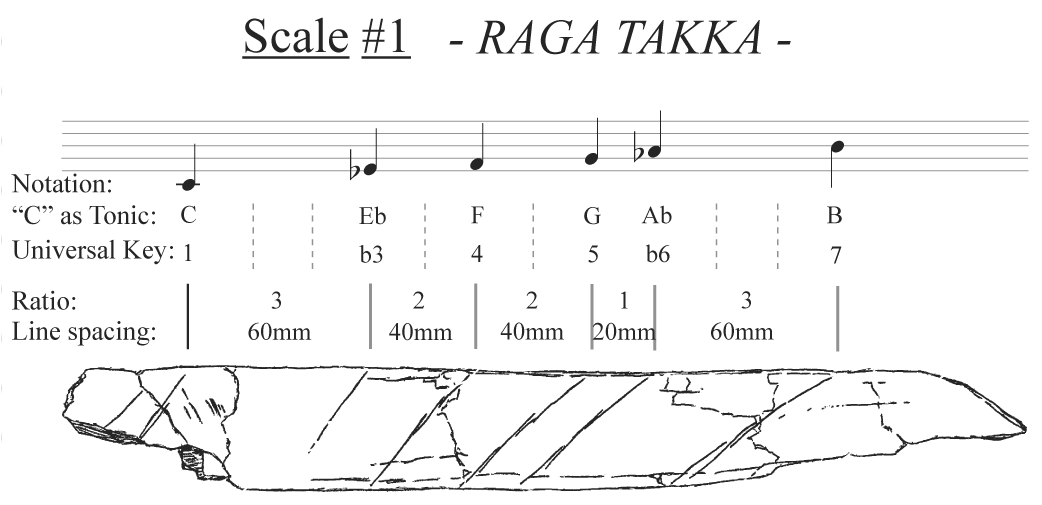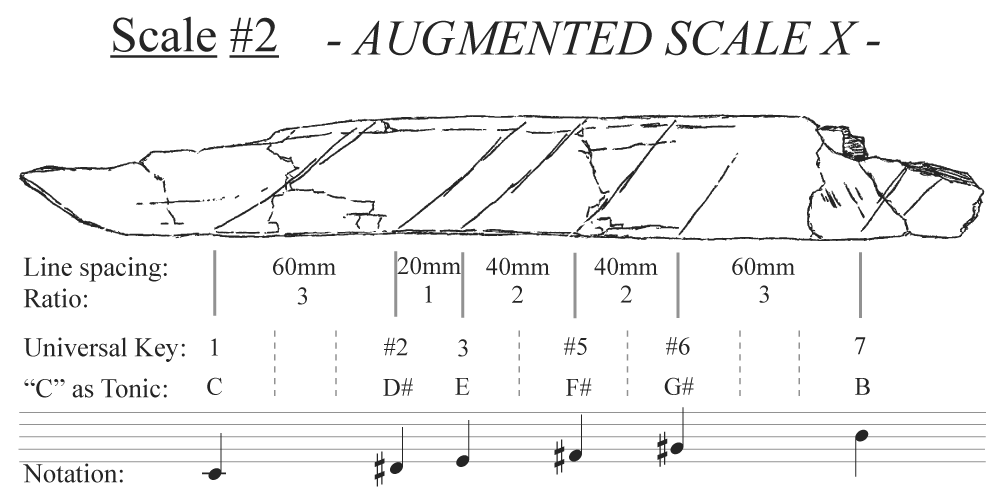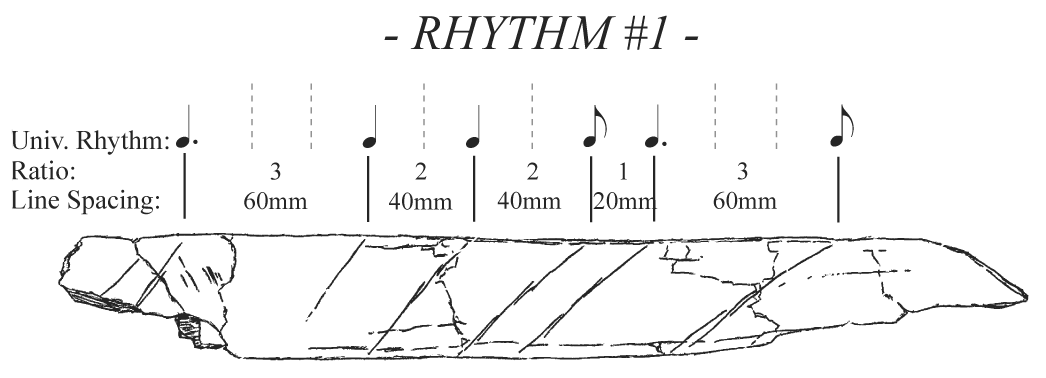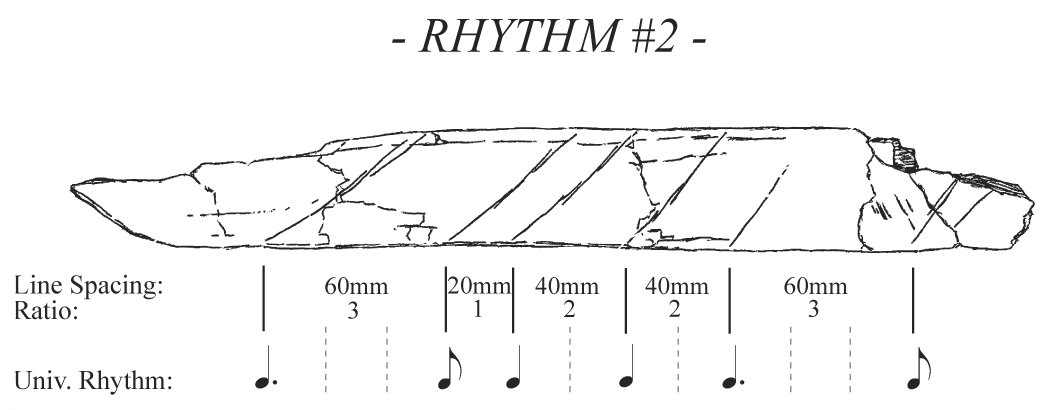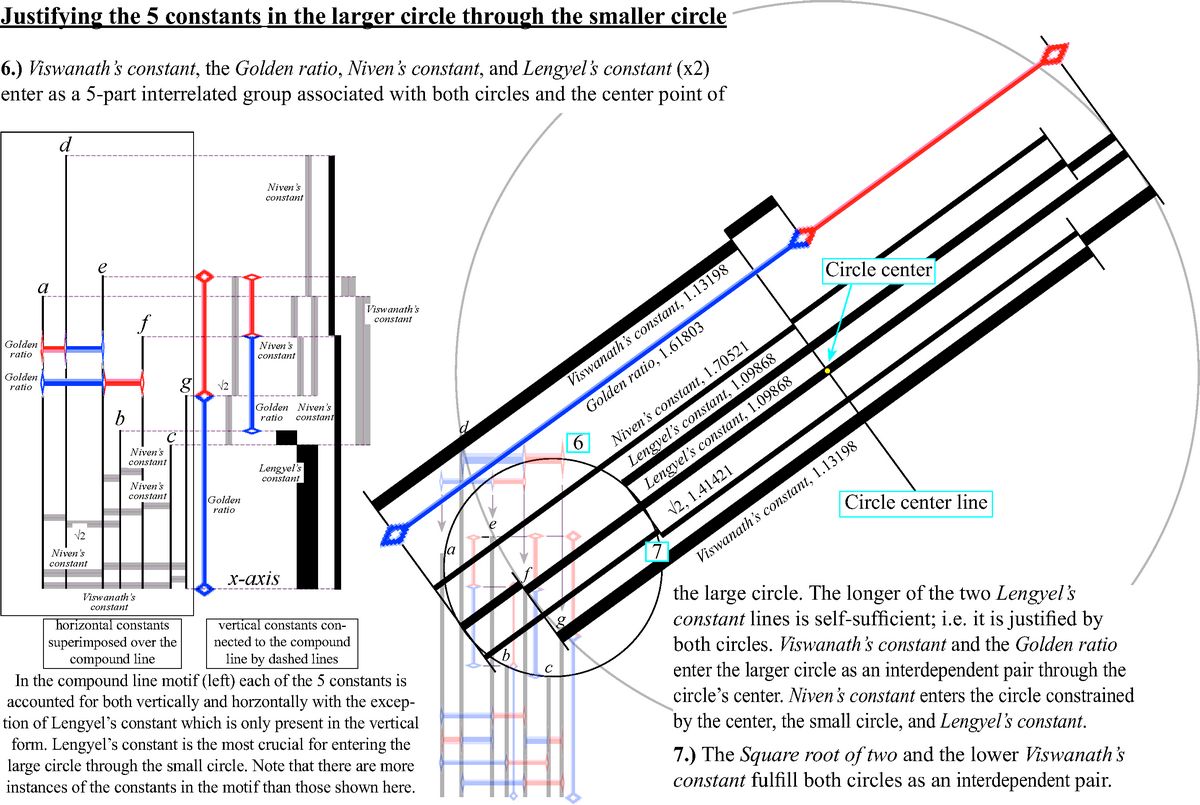-Physicist, requested anonymity
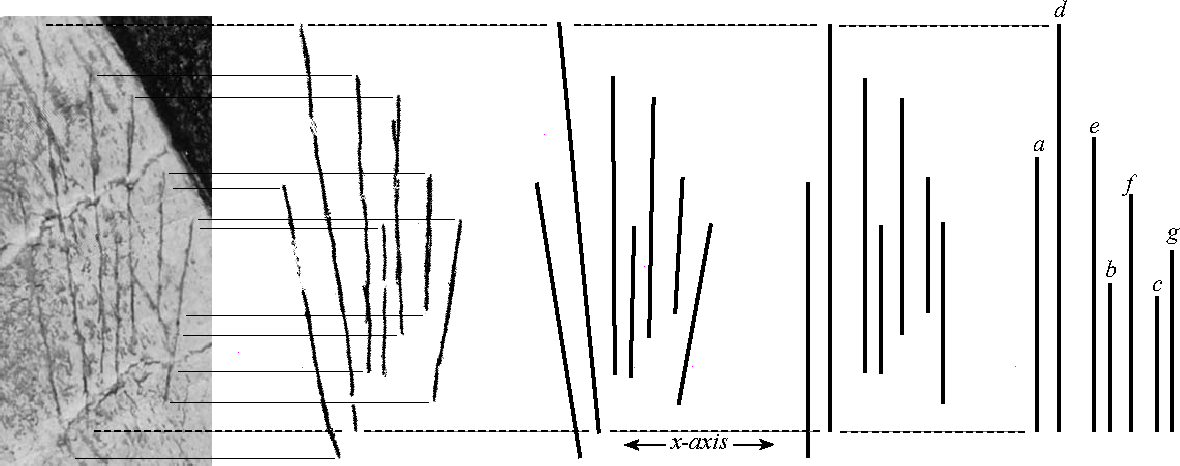
Fig. 1. A study of the 400,000-year old engraved bone Artifact 1 side-fan motif from Bilzingsleben eliminating the variables of angle and horizontal positioning of the lines and applying the musical technique known as “compound line” (see Fig. 5 for definition). It was originally presented at the XV UISPP Congress in 2006 in the program Phi in the Acheulian. Photograph by R. Bednarik, cropped with permission. The study is further explored in the recent paper, Five constants from an Acheulian compound line, presented at the Aplimat (Applied Mathematics) 2012 Conference in Bratislava by Professor Mauro Francaviglia (see Fig. 5).
Because there is the physical evidence of complex engravings, it can safely be said that human abilities such as reasoning, philosophizing, or simply being creative have never undergone any evolutionary change.
It can probably also be stated with a fair degree of confidence that the same is true for every representative of the animal kingdom. Whatever intelligence level any creature was at when it first appears in the fossil record is likely to be no different today.
It may sound humorous, but invertebrate sea creatures such as clams and snails which live in the water today are probably no more intelligent than they were 500 million years ago in the Cambrian seas. The fish that live in the sea today, no more intelligent than Silurian or Devonian fishes were. And in all likelihood your cat or dog friend is no more intelligent than the first saber-toothed cat or the first wolf.
So why stop there? What proof do we have that the human species is any different?
The reason I ask this is because while we have no way to compare the intelligence of ancient animals with modern animals we do have a means to do this with ancient humans and modern humans. That method is by comparing the creative work of ancient people with that of the artists and mathematicians of today. My proposal is that there is no difference and I offer these ongoing studies, most of which have been censored by the evolutionary community, as testable and transparent proof.
Fig. 2. This music-based study of Artifact 1 shows
how the particular compound line (zig zag melody) taken from Fig. 1 has
precise analogues in use today. Although there are other possible
interpretations, the terms shown here account perfectly for the Indian
scale, Raga Bhinna Pancama.
It is a challenging scale playable just as shown or set up in
“universal scale” degrees as 1 2 4 5 b6 7 which in the Key of C would
be played C D F G Ab B. The raga is known for its special quality of
containing no major or minor 3rd.
This mathematical evidence, just like that for very early people in the Americas, has turned out to be a big problem for the science community because it is as close to real-time proof as science is likely to get that our ancestors did not evolve but were very much like us from the beginning and that they were able to record their thoughts in some external form which has been preserved across time and which we are able to read.
